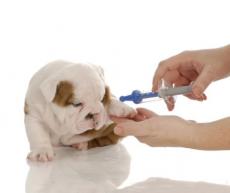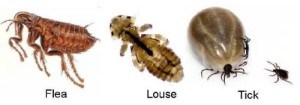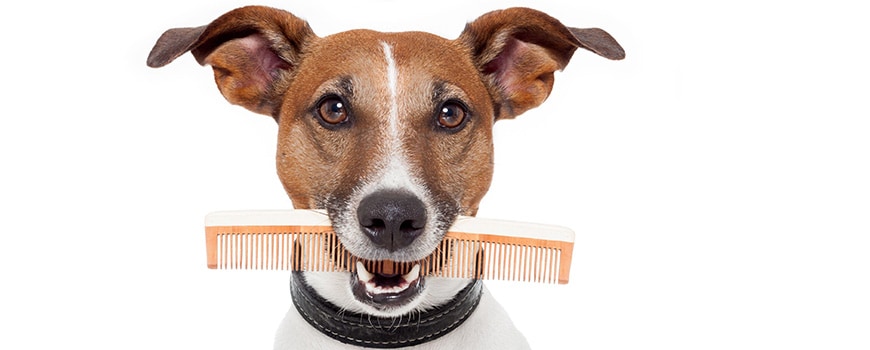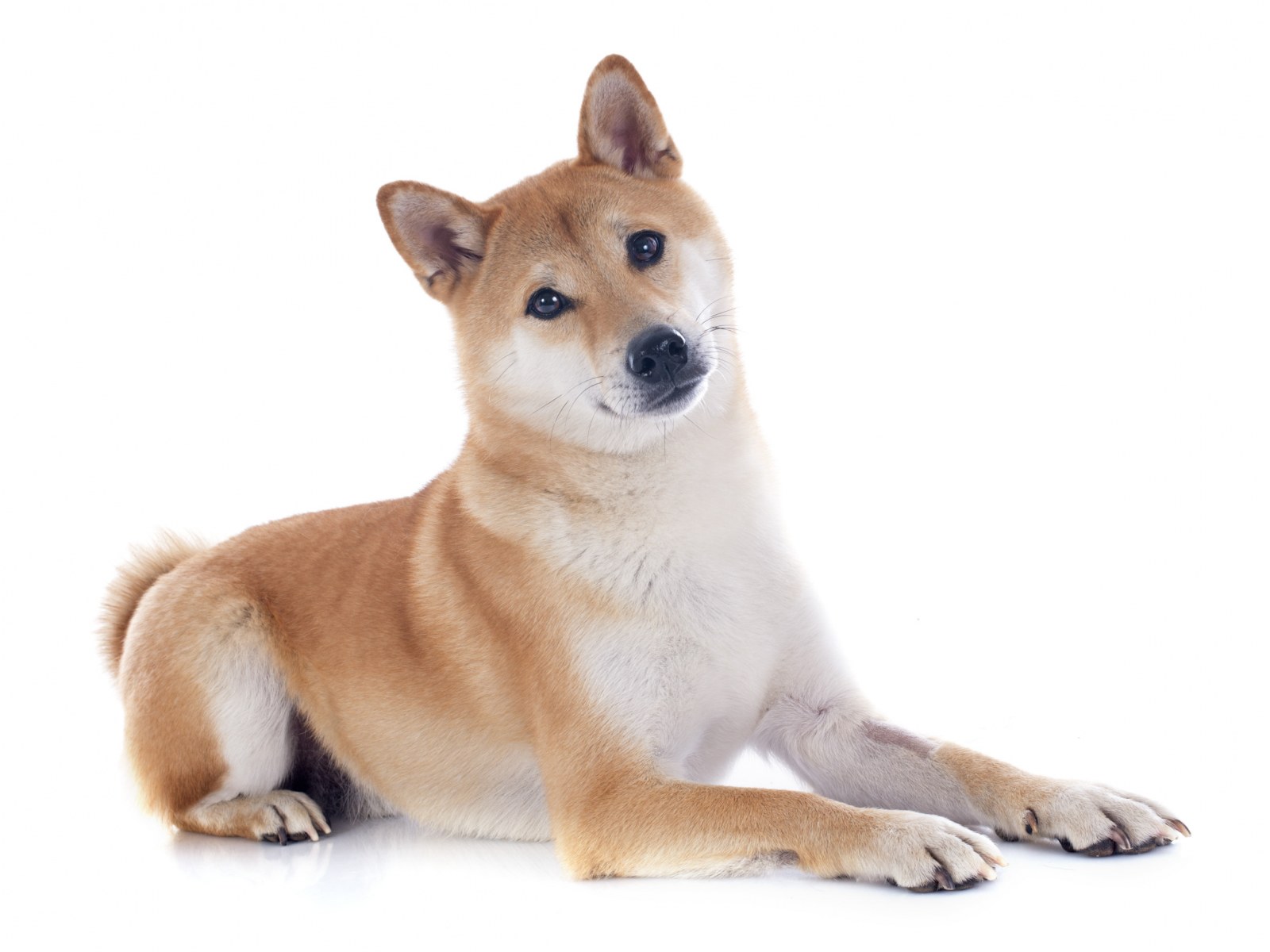Regardless of how caref ul you are in keeping your dog clean and well cared for, it is very easy for a dog to pick up opportunistic parasites, which are always looking to hop on to a host dog for a quick meal. They can drastically affect the condition of a dog’s skin and coat and may be encountered in any area of grassland or garden or even on the streets.
ul you are in keeping your dog clean and well cared for, it is very easy for a dog to pick up opportunistic parasites, which are always looking to hop on to a host dog for a quick meal. They can drastically affect the condition of a dog’s skin and coat and may be encountered in any area of grassland or garden or even on the streets.
Wild animals, including hedgehogs and foxes, are common spreaders of fleas and lice, as well as various forms of mange, which is a serious skin disease caused by mites – tiny parasites no larger than a pinhead. Cats, too, will often bring home fleas after their hunting adventures, and these are easily passed on to dogs and are the host for tapeworm larvae. Some external parasites are so small they cannot be seen with the naked eye, but the large majority can.
Basically, most external parasites cause the dog discomfort and irritation, which generally results in the dog shaking its head, persistently scratching and nibbling various parts of the body. The most common external dog parasites are listed below.
Fleas
Description: Quite easily seen by the naked eye. They are small, slightly oval, dark brown, long- legged, fast-leaping insects. It is said that the flea migrates around the dog’s whole body every 24 hours. How can you tell if they are there? They leave small droppings that are very dark in color and remain visible in the coat. Fleas are not very discriminating and will bite and feed on you, too.
The flea actively bites the dog and sucks small amounts of blood from the animal. Some dogs are allergic to the saliva left in the bite wound and scratch intensely. The flea is also the host animal to the tapeworm, so if, while an animal is nibbling away at an itch, it ingests a flea, a tapeworm infestation of the gut might result, which can be very debilitating for the dog. Dogs that spend a lot of time outside can continually become re-infested with fleas.
Action and treatment: Fortunately, there are many ways that fleas can be eliminated. The best approach is initially to bathe your dog to get rid of the fleas and then use a proprietary treatment, which may be in the form of a spray, a treated collar or spot-on lotions. Read the detailed instructions first, as spot-on treatments must be used at least four days after a bath.
Also remember to treat your house with a long-acting environmental spray. In very severe cases, a pest control service may be necessary. Vacuuming also helps to rid your house of fleas and their eggs, which can remain dormant for up to two years in your carpets and furniture, waiting for an opportune moment to hatch, attach themselves to a host and start the whole cycle going again.
Ticks
Description: Us ually picked up in grassy woodland areas, mainly in spring and summer. They attach themselves by burying their mouth parts in the go’s skin, where they become engorged on the dog’s blood and swell to the size of a small pea. When full of blood, they fall off. If a female tick has mated, she will lay her eggs in a mass and then die.
ually picked up in grassy woodland areas, mainly in spring and summer. They attach themselves by burying their mouth parts in the go’s skin, where they become engorged on the dog’s blood and swell to the size of a small pea. When full of blood, they fall off. If a female tick has mated, she will lay her eggs in a mass and then die.
The larvae that hatch from the eggs migrate up onto grass and vegetation and wait for another host animal to pass by to which they can attach themselves. This whole process takes from a few days to a week. Ticks are normally found around the head area and often on the ears, as the dog will push its head into undergrowth and the ticks very quickly latch onto it. Ticks should not be handled as some are carriers of Lyme disease, a bacterial infection which can be transmitted to humans and which can develop into a very serious illness.
Action and treatment: Some of the spot-on cures for fleas are also effective on ticks. Inexpensive tick tweezers can be purchased which help you to remove the whole tick by clasping and “unscrewing” it – which usually takes about three full turns. The mouthpiece of the tick will then come cleanly out of the skin, leaving little trace of where it had been. (If you just use tweezers to pull the tick off, you will normally break it and leave the head of the tick under the skin, which can lead to local infection.)
Or you can try putting some oil, such as olive oil, or Vaseline on and around the head section of the tick, which hopefully will cause the tick to struggle for air and lose its grip.
Lice
Description: Lice are small, fat, wingless insects that inhabit a host animal’s skin. There are two types of lice. Biting lice chew on your dog’s skin, while sucking lice penetrate the skin and feed on tissue fluids. Lice lay tiny clusters of eggs called “nits” that can be seen sticking to the shafts of the deep hair. They are intensely irritating and should be treated promptly.
Action and treatment: Appropriate veterinary shampoos and some spot-on insecticide treatments are normally effective. You may also need to use a fine-toothed comb to rid the coat of nits.
Mites
Description: Mites are tiny arthropods, some of which are parasitic on other animals. There are four main mites that affect dogs: mange mites (sarcoptic and demodectic) and two others (the fur mite, Cheyletiella, and harvest mites). Let’s deal with sarcastic mange first. These microscopic mites burrow into the skin, often around the ears and eyes of the dog, causing intense irritation, crusty scabs, lots of scratching, subsequent hair loss and body sores. Also a strong odor is detectable. Sarcoptic mange is highly contagious to other dogs and can cause scabies in humans.
Demodectic mange mites infect the hair follicles. Itching is much less acute, but nasty pustules often develop as a result of secondary infection. This type of mange is often hereditary.
Action and treatment for sarcoptic and demodectic mange: Sometimes a skin scrape needs to be taken and looked at under a microscope by a vet to confirm the diagnosis. Then standard veterinary shampoos should be used on a regular basis until the infection is cleared. Thorough cleaning or destruction of the pet’s bedding is recommended as these mites can live for a short time off the dog’s body.
Cheyletiella mites are just visible to the naked eye and form what looks like dandruff which, as they are often moving, has led to the colorful description “walking dandruff”. These mites cause a lot of skin scaling but with some irritation.
Action and treatment for Cheyletiella mites: These mites have a long life cycle so although a regular veterinary shampoo will easily clear them up, application does need to be repeated regularly for a few weeks. These mites are contagious through contact with other dogs. Bedding should be thoroughly cleaned, too.
The harvest mite is a very small, barely visible red mite. Its larvae usually infest field mice, and are frequently to be found in the summer and autumn around farmland and fields. They tend to attack only the feet and toes of dogs, causing them to lick and nibble around that area to relieve the irritation.
Action and treatment for harvest mites: Again, veterinary shampoos will easily take care of this condition.
Ear Mites
Description: Strangely enough, while nearly all of the other mites are dark in color, these little fellows are white and can just be seen by the naked eye, slowly walking around in the dark ear wax. They often cause the dog to shake its head and scratch its ears. They can easily be caught from cats.
Action and treatment: Gently clean surplus wax from around the ear flap, not probing into the ear. You can use an ear wipe or an alcohol-based ear-cleaning product to do this. Once this is done, corrective ear drops or ear powder can be used following the directions on the packet. These products can easily be obtained from pet stores. However, if you are unsure of how to use them correctly or if your home treatment does not appear to solve the problem, seek veterinary advice.
Ringworm
Description: This is actually not a worm but a fungus that grows on the skin. It is highly contagious and can infect humans, so take care when handling a dog with ringworm. It first shows itself as a small, bald area, usually circular in shape, which looks irritated and slightly scaly. These patches may be found anywhere on the skin around the body. Often only one or two areas are affected, and then it spreads as the infection progresses. They do not seem to cause a lot of irritation in dogs.
Action and treatment: Often a skin scrape taken by a vet will be necessary to identify this fungus. Once identified, veterinary creams and shampoos plus anti-fungal tablets will eradicate this condition. It is also sensible to vacuum your carpets and furnishings and to keep the dog’s bedding clean to inhibit dispersal of fungal spores around the house.


